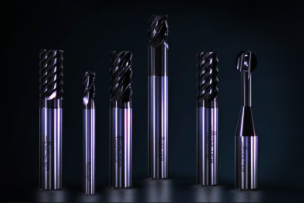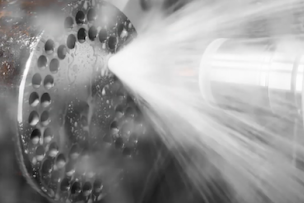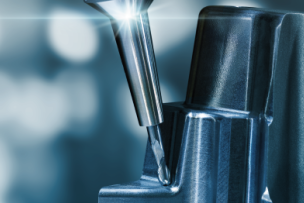Innovation, potential
Gerd Kussmaul, senior turning product manager at Walter, describes the concept behind the new HIPIMS PVD-coated indexable inserts.
“Even if the fine finishing and finishing of ISO M, S, P and N materials with the highest requirements for surface quality are still special or niche applications, we see great potential due to dynamic growth in the market right now,” Kussmaul says. He explains that fine finishing involves turning operations which are designed to achieve a consistently good surface quality.
“Walter has been looking for geometries and cutting tool materials that achieve this with process reliability,” Kussmaul explains. “The new PVD HIPIMS coatings demonstrate ideal properties for achieving extremely smooth surface and great layer adhesion on sharp cutting edges.”
For the hard and tough alloys like Inconel and titanium alloys, sharp cutting edges are needed even for higher feed rate and depth-of-cut operations ranging into medium machining to light roughing. Due to the tendency of nickel and cobalt alloys to work harden during machining, sharper edges reduce this effect and the depth-of-cut notching wear that it creates. The sharper edges also reduce build-up on the cutting edge, which becomes more likely as feed rates increase.
Finishing inserts with extremely sharp edge geometries, such as the FN2 or the MN2, as well as medium geometries like the MS3, benefit from this coating process because extremely stable cutting edges are produced. Even under high loads, the layers do not chip off and the cutting edges do not break away. In addition, the high level of edge stability ensures lower levels of more even wear. Even wearing ensures dimensional stability and surface quality throughout the tool’s life.
Extremely smooth HIPIMS coatings are ideal for machining sticky aluminum alloys for example. These and other materials, which would otherwise stick to the cutting edge during machining, now reliably glide over it. Typical forms of wear, such as built-up edges or significant flank face wear, caused by chemical and physical reactions with adhering the workpiece rarely occur.
Increased machining volumes
As Kussmaul notes, people don’t necessarily change from a tried-and-true cutting tool material without good reasons.
“Among other factors, the outstanding results achieved by the new HIPIMS grades regarding tool life and surface quality speak in their favor. This is clear from comparative tests,” Kussmaul says.
When performing finishing operations on tool steel H13 with 54 HRC, it was possible to increase the tool life by 275%. And the surface value of Ra 0.8µm was achieved throughout the entire tool life with process reliability.
Kussmaul describes another application: finishing Inconel 718DA at a cutting speed of 262 FPM, with the new grade WSM01 and achieving a cutting time and tool life of 18 minutes – double the previous WXN10 grade.








Talk to Us!
Leave a reply
Your email address will not be published. Required fields are marked *